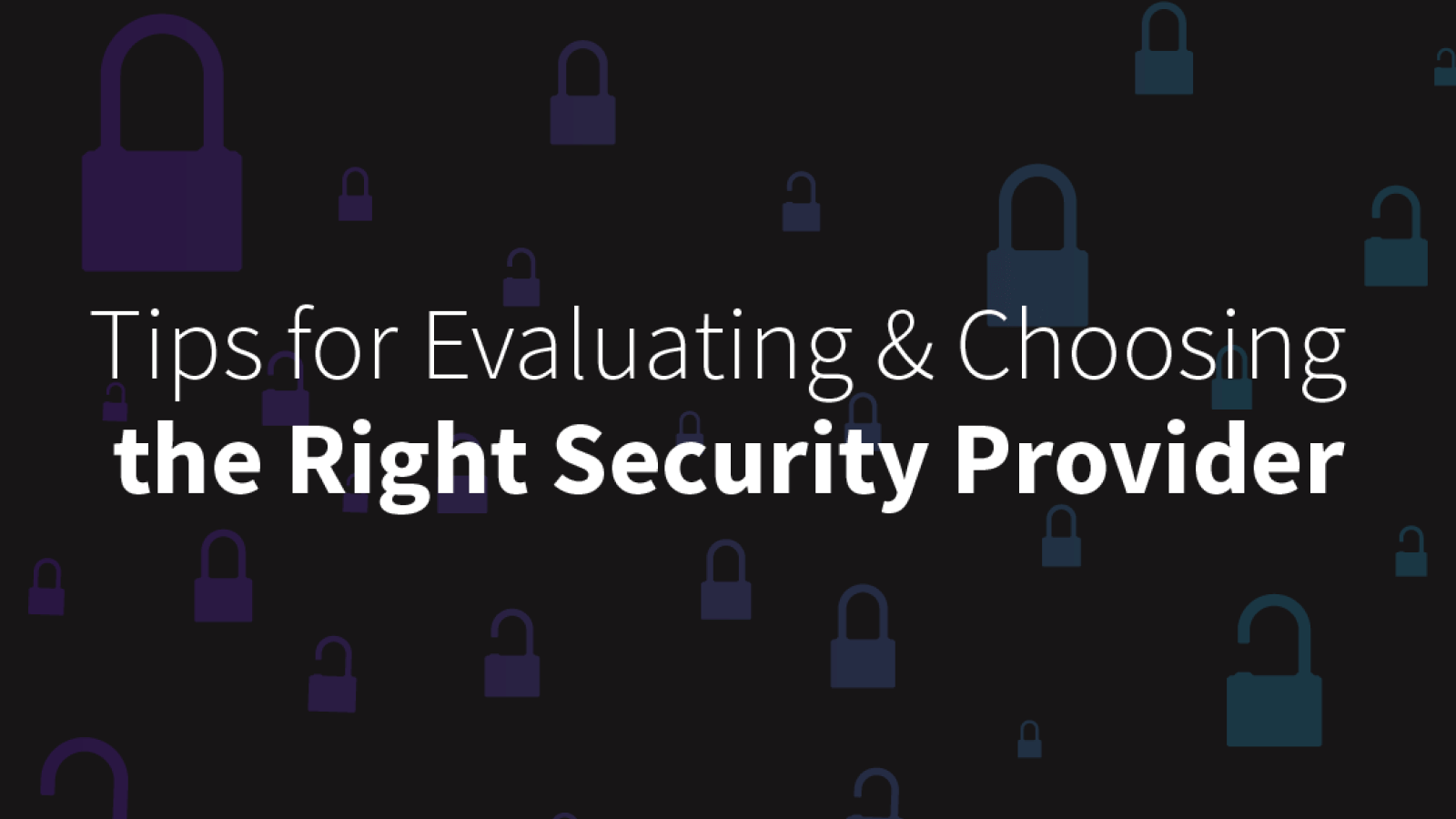Are you and your organization are gearing up for a transition to a new security provider? Then you likely have realized just how crowded the security landscape is with different factors to keep in mind. If you’re a Trusted Advisor, you’re already well aware of these factors. Yet, helping your customers evaluate and choose the right provider can still prove difficult. Whether you’re seeking out providers who can add to pre-existing security measures or this is your customer’s first foray into the “land” of security, it’s important to take a step back and evaluate the organization’s unique needs before making such an important decision! Check out four tips for evaluating security providers to ensure your customers select the right one for their business.
Consider Integrations
Finding a new technology provider can feel a bit like a game of Tetris. How do you find the perfect provider that fits into a complicated technology infrastructure as it currently exists? Simply gutting existing security measures for a new provider or solution isn’t logical. Nor is selecting a provider that won’t integrate with other existing solutions. Your customers likely spent a good amount of money and time choosing, onboarding, and learning how these solutions work. As you evaluate new security providers together, be sure to understand their current security stack. What do they already have? Which gaps are they looking to fill? Do certain solutions take precedence over others, and how can they ensure their “Tetris block” will fall just perfectly to integrate properly with their current technology and expertise? All of these are important questions that can get the ball rolling and help narrow down the selection.
Consider Expertise
Speaking of expertise, it’s important to note that products are nothing without people behind them. With the huge gap in the cyber job market, it’s harder than ever for businesses to attract and retain talent. In fact, Cybersecurity ventures reported that the number of unfilled cybersecurity jobs grew by 350% from 2013 to 2021, resulting in approximately 3.5 million unfilled cybersecurity jobs. This is why you’ll hear from customers that they’ve bought expensive CapEx tools, like a SIEM, but it’s sitting on a shelf somewhere, unused – or they implemented it, but they ignore all the noise it’s sending them, a response often referred to as “alert fatigue”. Your clients often need help with the tools they have in place today. Therefore, throwing more products at them isn’t going to solve anything! That’s where security services come in, and why we want to partner with service providers and not pure product vendors. When evaluating solutions for your customers, it’s crucial to understand their levels of comfort and expertise with their existing setup, as well as any new tools you might collectively implement. Are they certified on the products they own? Are said products successfully implemented? How do they handle alerts, and do they have coverage on nights and weekends? Is there an in-house or third-party Security Operations Center (SOC)? What’s the plan if there is a security incident, or God forbid, a breach? Taking this track should get your customer talking. From there, you’re better able to identify pain points that a Managed Security Service Provider (MSSP) can address.
Consider Scalability
No organization wants to remain stagnant. That means their technology infrastructure, their workforce, and their product or service is likely to grow and develop as time goes on. Growth is incredibly important, but it also widens the threat surface, potentially creating additional vulnerabilities for an organization. Because of this, it’s necessary to know how a security provider handles scalability. First, consider the priorities of your customer’s organization. Is it providing them service around-the-clock, or ensuring their global workforce has support nearby? The selected security provider should have the resources to allow them to comfortably continue providing their product or service with the highest priorities in mind. It’s also important to ask about their practices for securing the technology of an incoming employee, both remote and in-office. Similarly, for example, if your customer chooses to migrate some or all of their organization’s data to the cloud, what are the provider’s practices for ensuring they can do so safely and without threat to data or operations? Understanding the strategy and plans already in place by a provider, as well as how those can be specifically implemented for an organization, will help paint a better picture of how a potential provider fits into one’s technology infrastructure!
Remind Your Customers: Consider Your Trusted Advisor
Choosing a security provider is no small task. There’s a good chance your customers don’t have the time, expertise, or buy-in to do it alone. Fortunately, that’s where you, as a Trusted Advisor, come in! While it’s important to understand and inquire about these considerations, remind your customers they can rest easy knowing their Trusted Advisor is doing a deep dive into both their organization’s unique needs and the different features and practices that help them reach their business goals.
If you are an IT decision-maker looking to connect with a Trusted Advisor who can help you determine the right solution for your organization, fill out this quick form to get started! If you are a Trusted Advisor looking to explore more of AVANT’s resources to help you guide and close your opportunities, reach out to us here and we’ll get in touch as soon as possible!
